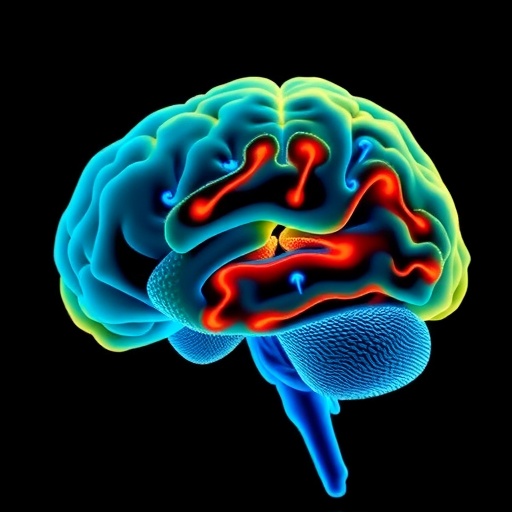In a groundbreaking study published in BMC Psychiatry, researchers have unveiled critical neurobiological distinctions underlying somatic depression, a distinct subtype of major depressive disorder (MDD). This research delves into the hippocampal subregions, exposing structural and functional abnormalities uniquely associated with somatic depression, thereby advancing our understanding of the neuroanatomical substrates that differentiate it from non-somatic depression.
The hippocampus, a complex brain structure critical for memory and emotional processing, comprises several subfields with specialized functions. Despite its known involvement in depressive disorders, previous investigations largely treated it as a homogeneous entity. This new study challenges that approach by dissecting the hippocampus into its constituent subregions to map disruptions specific to somatic depression.
A cohort of 261 individuals participated in this investigation, including 190 patients diagnosed with major depressive disorder and 71 healthy controls. Using advanced 3.0 Tesla resting-state magnetic resonance imaging (MRI), the team meticulously measured both grey matter volume (GMV) and functional connectivity (FC) within hippocampal subregions. These neuroimaging metrics served as indicators of structural integrity and functional communication between brain regions respectively.
Remarkably, the study identified significant reductions in grey matter volume localized in the left and right hippocampus amygdala transition area (HATA) among patients suffering from somatic depression compared to their non-somatic counterparts. The amygdala transition area, an anatomically intricate nexus linking hippocampus and amygdala, is crucial for integrating emotional and sensory information, which may underpin somatic symptomatology.
Beyond structural alterations, functional connectivity analyses revealed diminished communication between the left HATA and the left superior occipital gyrus as well as between the right HATA and the left middle temporal gyrus in somatic depression patients. These disrupted networks suggest impaired integration of sensory and cognitive processing pathways, potentially explaining the somatization phenomena observed clinically.
Of particular significance, the strength of connectivity between the left HATA and left superior occipital gyrus correlated positively with clinical measures of depression severity, including scores from the Hamilton Depression Rating Scale (HAMD-17) and assessments of cognitive disturbance. This finding not only substantiates a link between hippocampal network dysfunction and depressive symptomatology but also offers a promising biomarker for disease severity.
The implications of these findings are multifaceted. They underscore the importance of viewing the hippocampus as a heterogeneous structure where specific subregions contribute differentially to psychopathology. Identifying the HATA as a locus of disruption enhances the precision of neurobiological models of somatic depression and opens avenues for targeted neuromodulatory treatments.
Moreover, the involvement of sensory processing areas like the superior occipital gyrus emphasizes the cross-talk between limbic structures and cortical sensory regions, possibly elucidating mechanisms by which emotional disturbances manifest somatically. This cross-modal interaction highlights a neural pathway that could be manipulated therapeutically to alleviate somatic symptoms.
The study’s methodology, combining high-resolution imaging with rigorous clinical phenotyping, represents a methodological advance in psychiatric neuroimaging. It sets the stage for further work aimed at unraveling complex brain-behavior relationships in depressive subtypes, with potential to tailor interventions based upon distinct neurobiological signatures.
Future research may expand this approach to other subfields within the hippocampus and examine longitudinal changes in GMV and FC as these relate to treatment response. Additionally, exploring how these hippocampal abnormalities interact with other key brain circuits implicated in mood regulation will deepen our understanding of depression’s heterogeneity.
By pinpointing neurobiological markers specific to somatic depression, this study paves the way not only for refined diagnostic criteria but also for personalized therapeutic strategies. As precision psychiatry gains momentum, such targeted insights into brain network dysfunction hold promise for mitigating the substantial burden of depressive disorders worldwide.
In conclusion, the structural and functional aberrations of the hippocampus, particularly within the amygdala transition area, represent a neurobiological hallmark of somatic depression. The connectivity disruptions involving sensory cortical regions may serve as a novel target for neuroregulation, offering hope for innovative treatment modalities tailored to this debilitating subtype of depression.
Subject of Research: Neurobiological distinctions of somatic depression focusing on hippocampal subregions.
Article Title: Brain structural and functional aberrant of hippocampal subregions was associated with somatic depression.
Article References:
Juan, Q., Liuyi, Z., Yuxuan, H. et al. Brain structural and functional aberrant of hippocampal subregions was associated with somatic depression. BMC Psychiatry 25, 978 (2025). https://doi.org/10.1186/s12888-025-07386-y
Image Credits: AI Generated
DOI: https://doi.org/10.1186/s12888-025-07386-y




